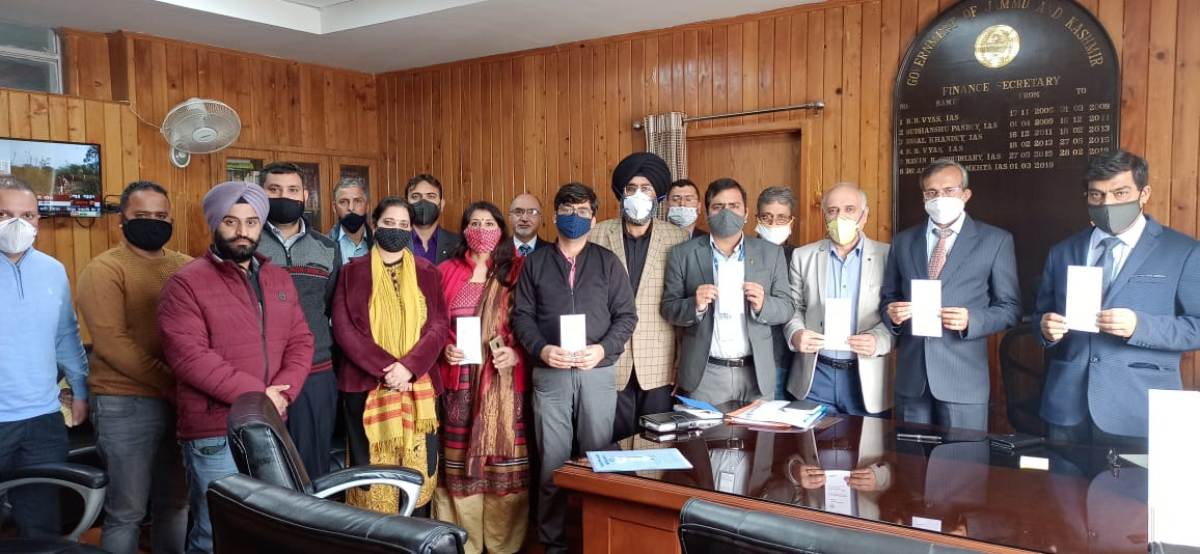In the book, Beyond Covid’s Shadow: Mapping India’s Economic Resurgence, Haseeb A Drabu makes a case and suggests an alternative. Here is an abridged version of a chapter

The Covid-19 pandemic has exposed the fault lines of federalism in India like never before. The policy responses to the unprecedented crisis have not only lacked in coordination and even worked at cross purposes but have failed to leverage the strengths of the three levels of governance.
Indeed, it reached a point where the management of the pandemic has become a centre versus states issue. There is little doubt that the pandemic has exposed the Union Government’s commitment to a federal constitutional republic to a degree unmatched since its birth. This has become possible because the foundational framework of federalism and its design as laid out in the Constitution of India is not just weak but outdated.
In the new framework, the Centre should exercise leadership instead of control, and economic support instead of dominance. It is this that should form the basis of the new federal compact of the Union with states.
In this essay, it is suggested that the current federal framework, which is colonial in its moorings, unionist in its ideology and patriarchal in its operations needs a complete rethink. Its instrumentalities which have evolved in the context of a closed command economy have to be redesigned to suit the needs and open regulated economy. The scope and remit of federalism has to be widened to include the newer forms of government intervention, which are aligned to the new economic structure.
The New Framework
In the new framework, the Centre should exercise leadership instead of control, and economic support instead of dominance. It is this that should form the basis of the new federal compact of the Union with states.
This is all the more important in the context of a distinct move from a republican democracy to a majoritarian one, which has far-reaching implications and consequences for the Indian nation and the nation-state; be the social compact with the people across the country or the political-economic compact with states in the Union. This new compact should be based on the following four pillars:
Regulatory Federalism
The demise of the old control and command state has seen the rise of the new regulatory state in India; equally centralised, more pervasive and all-powerful. Post-1991, there has been a proliferation of “autonomous” regulatory institutions set up under Acts of Parliament in various sectors and spheres of the national and state economies. To a large extent, the direct ministerial and bureaucratic control has been replaced by indirect regulatory diktat. This regulatory state, as it is today, is nothing but an extended arm of the central government; not only in terms of the control but even in their design, the regulatory bodies are extremely Union-centric.

The states have very little role in this crucial area of public policy. The authority to set the regulatory standards rests with the Centre, while the state governments have to just report or at best monitor compliance. They don’t even have the authority to choose the combination of policies to meet the set standards. It is a well-established research finding that this form of delegation tends to be the least efficient form. In fact, the reverse form of delegation, in which state governments choose their own individual standards which the central government then decides how to collectively adhere to is seen to be the most efficient.
The real challenge going forward is to design a framework for “resources revenue sharing” in addition to the “transactional revenue sharing” that has been traditionally been done so far. In other words, fiscal federalism must be now linked to resource federalism in India.
The network of these regulatory authorities cuts into the ambit of federal powers of policymaking at various levels. Indeed, the Centre has found it as the least controversial route to make inroads into the state list. This not only raises serious concerns regarding the vertical division of regulatory power, but also the misalignment between the state and central governments, the differing objectives and incentives undermine the purpose of the regulatory statutes.
Resources Federalism
This lead to the second key issue for a new federalism in India; natural resources, which is the focus area of the regulatory state. In a market-led growth paradigm natural resources – minerals, oil, gas and water – are the key revenue drivers for and major constraints to macroeconomic growth and its spread across the sub-national economies. In the extant system, this resources dimension is absent from the scheme of federal transfers. Indeed, even a rational framework for their redistribution of resource rents is yet to evolve. Not only are the financial transfers independent of the contribution by a region to the commodity deficient national economy, the central government corners and is a disproportionately large part of the revenues emanating from these. In the case of minerals, for instance, iron ore, states receive a meagre 20 per cent share in the form of royalty and SGST while the centre’s share, mainly from income and dividend tax, is 80 per cent. This is because large profits are made by iron ore companies due to increased demand, high prices, and the very low royalty payments that they make to states.
The Central Government directly extracts a substantial share of revenue indirectly from these resources. At the pre-production stage, the centre collects revenue as forest conservation charges and labour welfare cess, in the production stage in the form of customs duty, excise duty, income tax, and corporate taxes, and in the post-production stage as central tax and export duty. In addition to this, the Central government indirectly, through its public sector undertakings which are the biggest consumers of minerals has an additional source of revenues. The centre has been milking these minerals cows, through dividend and can also monetise their value by divesting its stake in these enterprises. The net result is that the distribution of revenues emanating from natural resources is effectively two thirds in favour of the centre.
The real challenge going forward is to design a framework for “resources revenue sharing” in addition to the “transactional revenue sharing” that has been traditionally been done so far. In other words, fiscal federalism must be now linked to resource federalism in India. A new alternative framework can start with a fair scheme for the distribution of resource rents, but it must eventually graduate towards a more robust and institutionalised system of resource federalism.
Post GST Fiscal Federalism
It is imperative to relook at the entire framework of federalism post the introduction of GST as a tax regime. The fundamental change in tax regime must appropriately inform the redesign of fiscal federalism. The manner in which the Union and the states have pooled their tax sovereignty ought to be the cornerstone of new federalism in India.
In the post GST era, the entire concept and criteria of horizontal distribution has to be reviewed. The existing criteria for devolution have been formulated in the context of an origin-based production system of taxation. Now, with GST, it is a destination-based consumption tax regime. Operationally, the earlier taxation system was favourable to the “producer states”. The new tax regime will benefit the “consumer states”.
How the service tax is contributing to the states revenue balances is yet to be totally deciphered. Both these will make a significant difference to the need for inter-se distribution of equalizing grants. A number of things including the pecking order of states is bound to see major reordering and recalibration.
In light of the pooling of tax sovereignty by the centre and the states under the GST regime, the new fiscal federal framework should be redesigned as vertical transfers and horizontal distribution exclusively based on revenue sharing. The idea should be to maximize the revenue sharing between the centre and states, and minimizing expenditure underwriting of states by the centre.
There should be no expenditure underwriting in the form of scheme and programmes funded by the centre. This will not only give the states greater flexibility to design programmes but also leave the management of actual gaps to them making the existing system of vertical transfers neater. This will sow the seeds of a new fiscal federal system.
Monetary Federalism
As of now, monetary policy is completely dominated by the Centre. RBI, in its architecture, both legislative as well as organisational is unitary. It has nothing to do with the political constitution of the country. Not surprising then, monetary federalism has rarely, if ever, figured in the discussion on Indian federalism, especially fiscal federalism. In a regulated open economy, the fiscal federal system needs to be complemented by monetary federalism.

The case for looking monetary federalism at this point is manifold; for one, in an open economy, monetary policy is the main tool of policy intervention as a fiscal intervention have reached their limit. Second, the case for monetary federalism rests on the fact that there is a differential impact of monetary policy on states depending on the level of their economic development, the financial deepening of the state, and the extent of industrialisation.
In the absence of a functional relationship between the states and the central bank, there are hardly any difference in inter-state spreads with no observed relationship between the spread and the indebtedness of states.
As such, states are neither rewarded nor penalized for their fiscal performance which obviously results in better financially managed states cross-subsidization the other states which is akin to financial repression.
On the basis of these factors, there is a prima facie case for repositioning the RBI as a federal central bank. While this needs to be thought through and there have to be safeguards, to give the existing Central Reserve Bank a Federal Reserve Bank character should not be that difficult or disruptive. The first step towards this end would be to reorganise the existing regional boards of the RBI and empower them. At present, when they are at best ornamental and at worst dysfunctional bodies.

The regional board can be provided with research services, which can enable them to prepare an agenda for discussion at the meetings, based on the research of monetary and credit conditions and enterprises in their respective jurisdictions. Once this is done, the Central Board of RBI, which is empowered to delegate function to the regional boards, can mandate these regional boards to make policy recommendations on local matters and to represent territorial and economic interests of local cooperative and indigenous banks. In view of the emerging banking crisis especially in the cooperative banking sector, the local RBI boards can be asked to play a regulatory role. Why not the regional boards be mandated to represent regional developmental interests as well.
Conclusion
To conclude, the extant federal framework, which functions more as a decentralised model of governance than a fiscal federal model, has to be rid of its colonial mooring and closed economy rigidities. It has to be reformulated in the context of an open regulated economy through the widening of its ambit by dividing the regulatory powers between the two tiers of government, sharing not just the tax revenues but the revenues accruing from the usage of natural resources and include states in the formulation of monetary policy.
(The book Beyond Covid’s Shadow: Mapping India’s Economic Resurgence was edited by Sanjaya Baru and was published by Rupa in January 2021)















